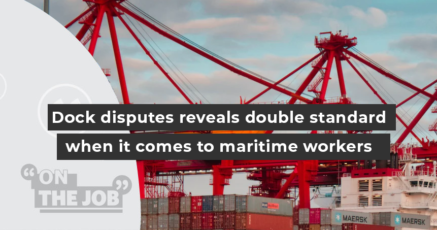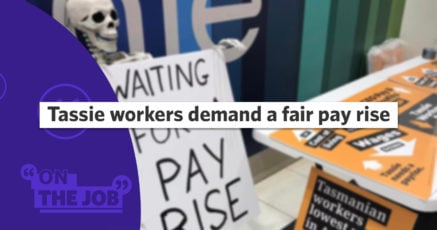The world of work will never be quite the same after the impact of the COVID-19 pandemic. How it will look and what impact it will have on workers is still to be determined.
Right now, though, a bit like Scott Morrison’s “vaccine stroll out”, it’s pretty clear that this government believes it’s not a race to get workplaces ready to be safe for the new world of work.
Millions of workers are set to return to workplaces where there is no unified set of requirements to keep them safe from COVID-19.
For workers, it will once again become a choice between getting a COVID-19 test or a loss of hours and income. Businesses will suffer due to disruptions. The health system, already battle-weary from two years of intense pandemic response, will be tested further.
So, let’s be clear. A comprehensive COVID-19 safe work strategy isn’t an optional extra – it’s vital. Every worker has the right to be safe and healthy at work, and that includes work where the transmission of the virus is a risk.
As Australian states pivot to a policy of “living with the virus” where lockdowns become a thing of the past or at worst, the last resort, we will all have to adjust our working lives accordingly.
The new COVID reality is that there will be the virus circulating in our communities.
Even those Australian states that have remained almost COVID free throughout the nearly two years of the pandemic will have to accept that at some point, the COVID19 virus will be part of their daily experience.
A robust and successful vaccine rollout with very high community coverage is seen as our best path forward. Still, people will get sick, there will be deaths as a result of infections, our most vulnerable citizens will face heightened risk and we’ll need to adjust our behaviour and expectations in some way to minimise risks to ourselves and others.
Inevitably, work will be disrupted as well. How significant those disruptions are will depend on how prepared we are for a workplace transition to a post-pandemic world.
For workers, the prospect of an endless cycle of testing and isolation as infection interrupts their communities will have devastating consequences as workers have to weigh up whether being off work awaiting test results means they can’t pay their bills.
No worker should be worse off because they do the right thing by their workplace and community by getting tested and self-isolating.
Marcie’s experience is a case study in how the impact of the virus in the workplace can be punishing for workers.
She works as a disability worker in New South Wales. It’s a job she describes as a “calling” after years spent in the hospitality sector.
When, in mid-2021, Marcie’s daughter began showing cold and flu symptoms she immediately took her to get tested.
Working with vulnerable people every day as she does, she is very careful to get tested whenever symptoms appear – she knows that people with a disability can’t risk becoming infected. In fact, Marcie has needed to take so many tests and wait for their results during the pandemic that she has already used all her paid sick days this year – mostly to wait for Covid test results.
In one instance, Marcie got to the point where she had to take seven days of “unpaid sick leave” because she wasn’t sure when her COVID-19 tests results would return due to the unprecedented demand for services as the outbreak in her community grew like wildfire.
In the end, Marcie missed 7 days of paid work, including overtime and weekend shifts.
This meant she lost nearly $1000 in income that week forcing her to use her savings for expenses such as rent and bills. Those savings were meant to be for a house deposit and using them caused her bank to question her financial stability – potentially making it harder to get a loan.
Being forced to take unpaid time off at short notice might also limit Marcie’s ability to continue to be allocated overtime shifts as these usually go to people who’ve worked overtime the previous week – again threatening her ability to pay bills and save some money towards a house.
This should never have happened to Marcie, and it should not happen again to any other worker who is caught between the choice of doing the safe and right thing by their workplace and community or going without pay.
The Morrison government needs to reintroduce meaningful support for workers and businesses affected by ongoing restrictions. The payment should be at least equal to that of JobKeeper and should, like JobKeeper, keep employers and employees connected to one another.
There have been other hard lessons throughout the pandemic about what workers will need to be able to do their jobs in a COVID safe environment. These include:
• All workers having strong, effective COVID Aware practices in their workplace.
• Workers have the right to safely test, isolate and quarantine where necessary without loss of income or job security.
• proper income support for workers and businesses that are impacted by COVID – both directly from local outbreaks and indirectly where their sector is impacted.
• A health system, with adequate funding, prepared and ready to deal with the anticipated increases in case numbers.
COVID-19 is with us for the long hallow whether we like it or not.
It’s up to the government to ensure that the price of living with the virus doesn’t land at the feet of Australian workers.
Would you like to share your work story with On the Job? We’d love to hear from you. Email us.













SHARE:
Making our workplaces safe IS a race.